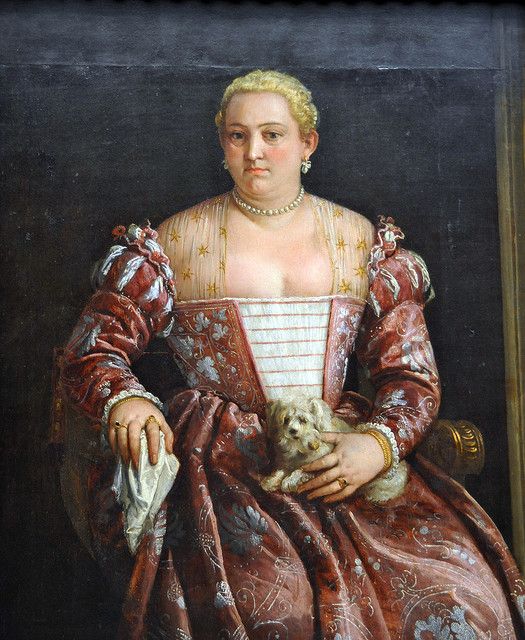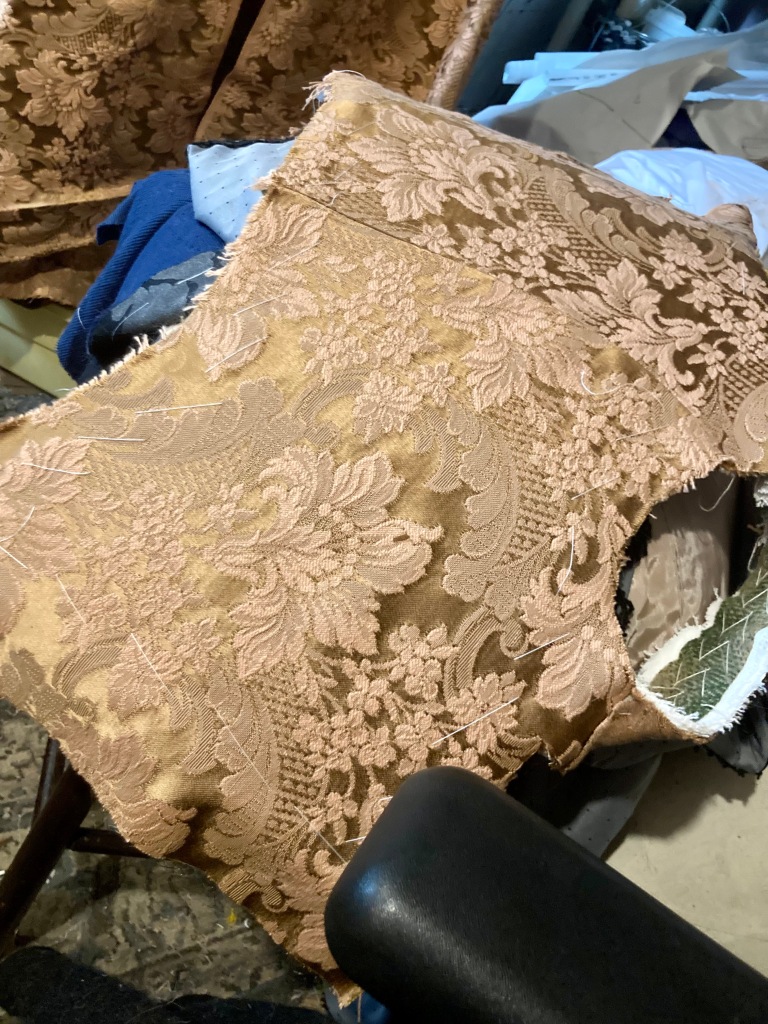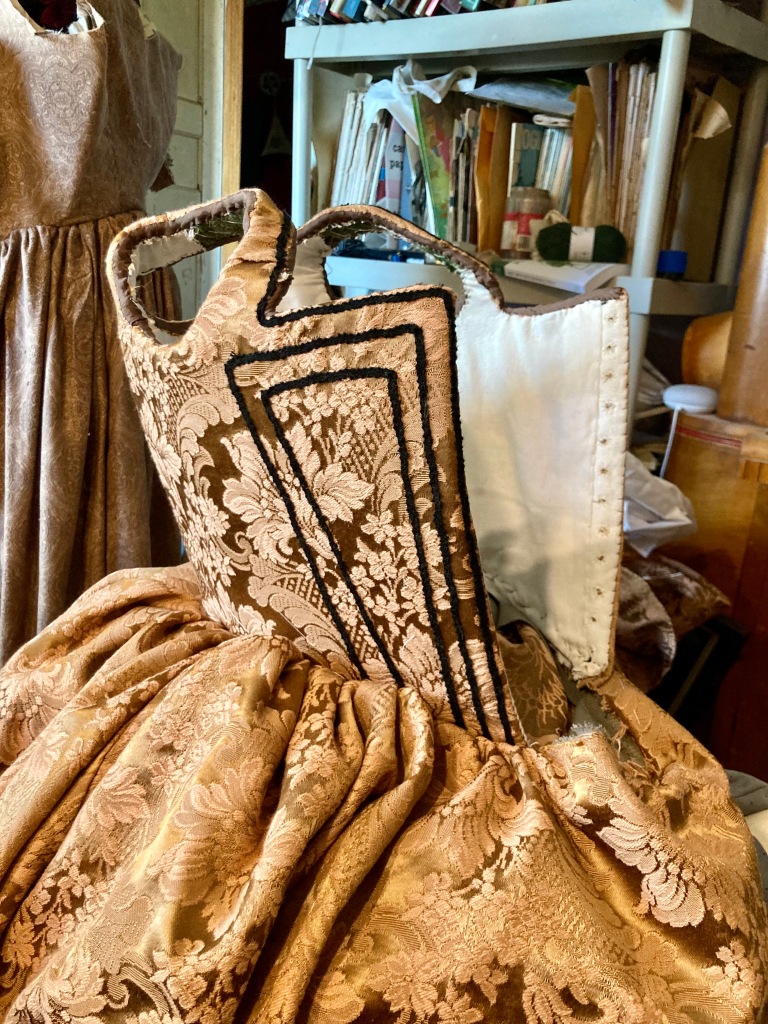It started because Veronica Franco was a loudmouth.
Don’t get me wrong; she had reasons. She was an estimable woman. But she was a woman, and a loudmouth, in a time when both were questionable behaviour, especially in conjunction, and she made enemies. And one of them, a big jerk named Maffio Venier, got into a poetic argument with her that in his case, at least, rapidly descended into ad hominem argument and insult. He called her a “monster”, made of “chalk, cardboard, and wood” – references to the “falsity” of women’s appearances. Chalk was the makeup used to cover imperfection. Wood referred to the pianelle or chopines, tall wooden shoes that women wore, ostensibly to protect their slippers, but really, these things were extreme.

Anyway, that all made sense. But what was the cardboard? It pretty much had to refer to the bodice, which in the period was stiff and slightly constricting and smooth.
Which was interesting because Venetian women didn’t wear corsets, as a rule, until very late. Corsets were believed to cause abortions, which was a mortal sin, so married women especially eschewed them (they were forbidden by sumptuary law for the same reason, but the mortal sin thing was real incentive to actually follow the law in this case). So they wore open front bodices under which a corset would have shown, proving that they weren’t wearing one.

But fashion is fashion, and in this case the fashion was for a smooth, stiff, constricted bodice. I had spent literal years experimenting with materials that would give the right look and still be practical (and legal, and not damn my soul to perdition!) and although I got some nice-looking results, I was not in any way convinced that they were period results. They had the look, but they weren’t right. And because I am me, that wasn’t good enough.
So I started looking at cardboard. At first, I was distracted by some experiments people were doing with glue-soaked linen. They had come to the same stiffened bodice conclusions I had, from another angle – there are pictures of dresses lying on the ground with nobody in them, but they retain their shape stiffly.

Being seamstresses, it was not unusual that these people looked for fabric solutions – clothes are made of fabric, right? But that word, cardboard, kept haunting me. And glue soaked linen, while very strong, is still flexible, and it wrinkles and bends when you heat it (like by wearing it on a hot day) and you have to heat it again to get it back flat.
I looked up Maffio’s word, cartone, and it just means cardboard. Pasteboard. It always has, even in the Latin, it is always stiffened paper. The earliest use of it they are pretty sure was stiffened papyrus, and it is never used to indicate linen. And we know they used cardboard and paper to stiffen collars and such, so is it really such a stretch for a period tailor to use it in a bodice? Increasingly not, I began to think.
So I got my hands on some heavy cardboard from a friend, and got to cutting. It’s a highly compressed pasteboard, maybe the thickness of a quarter, very like the back of a sketchbook. I used it as my base layer, pad-stitched it to some wool to soften the line and give it some shape. I made the straps out of a couple of layers of linen, not cardboard, and then covered the whole mess with my face fabric and lined it.


It does the right thing – when you leave it lying around it maintains its shape just like in the pic above, and it is very smooth and snug to wear, and doesn’t shift around. I wore it for the first time yesterday, all day, and it was generally pretty comfortable. I think in future versions (of course there will be future versions) I will trim the cardboard back further from the armscy, where it was a bit pinchy, and ease up on the layers in the strap itself. I found it bulky in a way it doesn’t need to be.
I also wonder whether the cardboard back is necessary – it doesn’t really add anything I don’t think, and it makes the garment more difficult to store. Storage is one of the things I am pondering – upper class women had a lot of clothes, and didn’t use hangars, they used chests, and this dress -although it matches the dress in that painting above- would store badly in a chest, it would take up too much space! I could lighten up the cardboard itself, but it still couldn’t be squashed, it would fold. So I’m going to try the next one with cardboard just in the fronts and around the side – to where the side back seams are – and see how that affects it.
